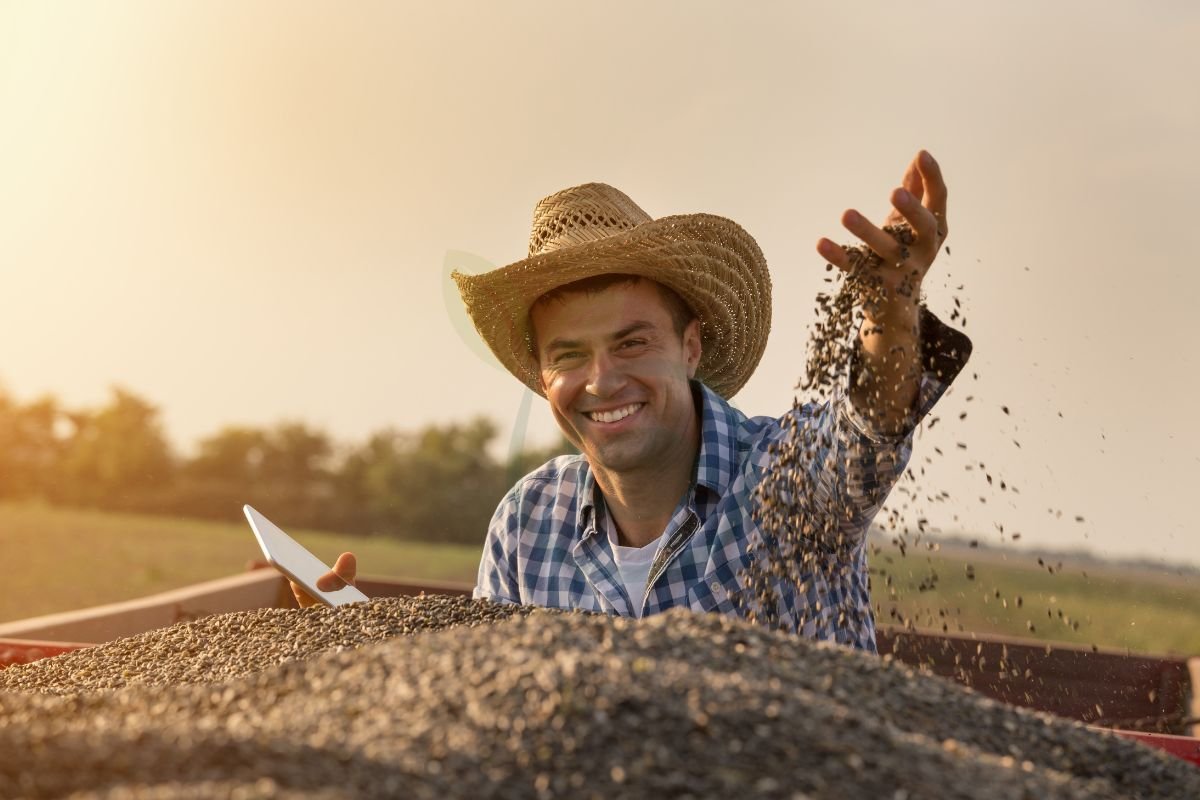Ever wondered how sunflower seeds make their way from the farm to your snack bowl? The process of harvesting sunflower seeds is a fascinating journey that involves meticulous planning, specialized equipment, and a deep understanding of nature's cycles. In this post, we'll dive into the nitty-gritty details of how farmers bring in the harvest and extract those tiny treasures from towering sunflowers.
From planting to blooming, and finally reaping what they sow, farmers employ an array of techniques to ensure a bountiful yield. We'll explore the intricate steps involved in this agricultural dance – from timing the harvest just right to employing cutting-edge machinery for efficient seed extraction. Get ready to uncover the secrets behind one of nature's most beloved snacks!
Highlights
- Harvesting Techniques: Farmers can use various methods such as hand harvesting, mechanical harvesting, or direct combining to efficiently harvest sunflower seeds based on their scale of operation and resources.
- Quality Control Measures: Implementing quality control measures during harvesting, processing, and storage is crucial to ensure the production of high-quality sunflower seeds for consumption or animal feed.
- Processing and Storage: Proper processing and storage techniques are essential to maintain the freshness and nutritional value of sunflower seeds, whether for human consumption or as animal feed.
- Diversification of Use: Sunflower seeds have versatile applications beyond consumption and animal feed, including oil extraction, biofuel production, and as an ingredient in various food products, offering farmers opportunities for diversification and additional income streams.
- Sustainable Practices: Emphasizing sustainable farming practices, such as crop rotation and soil conservation, can contribute to the long-term viability of sunflower seed production while minimizing environmental impact.
- Market Awareness: Understanding market demands and trends can guide farmers in optimizing their sunflower seed production for the most profitable outcomes.
Understanding Sunflower Harvesting
Harvest Time
Sunflower seeds are typically harvested in late September to early October. The timing of the harvest is crucial to ensure maximum seed maturity and quality. Harvesting at the right time is essential for optimal yield and oil content. Farmers aim to harvest sunflowers when the seeds have reached full maturity, which is indicated by a change in color from white or green to yellow or black. This signifies that the seeds are ready for harvesting, ensuring high-quality produce.
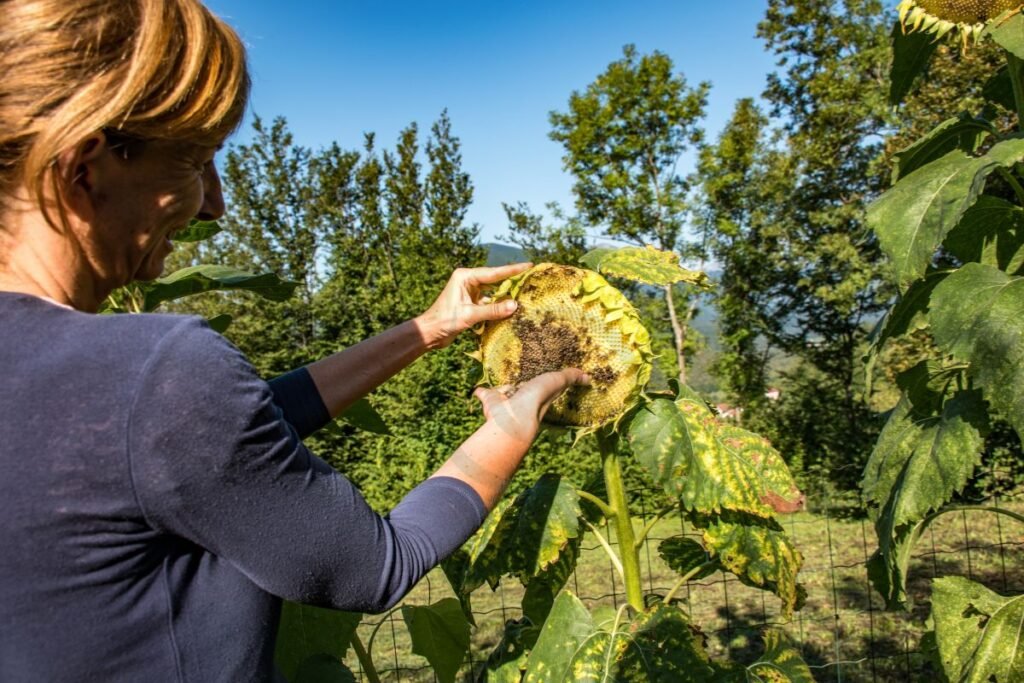
Ripeness Indicators Farmers look for signs such as the back of the sunflower heads turning brown and the bracts yellowing to determine ripeness. Checking the moisture content of the seeds helps in assessing their readiness for harvest. The appearance of the flower head and the color of the seeds are key indicators of ripeness. Mature sunflowers will have a dry and blackened appearance on their backside, indicating that they are ripe enough for harvesting.
Pre-Harvest Treatment Some farmers may apply desiccants to sunflowers to promote uniform ripening before harvest. Pre-harvest treatment involves managing weeds and ensuring proper plant health for optimal seed development. Protecting sunflowers from diseases and pests is crucial before harvesting; this can be achieved through appropriate pest control measures like using natural predators or introducing beneficial insects into fields.
Preparing for Harvest
Equipment Selection
Farmers harvesting sunflower seeds have to choose between different types of equipment. They can opt for combine harvesters or specialized sunflower harvesting attachments. Selecting the right equipment is crucial for efficient harvesting. Proper maintenance and adjustment of the chosen equipment also play a significant role in effective seed extraction.
For example, if a farmer's field has large expanses of sunflowers, they might consider using a combine harvester because it is suitable for larger crops. On the other hand, if the field has tight spaces or uneven terrain, specialized sunflower harvesting attachments may be more appropriate.
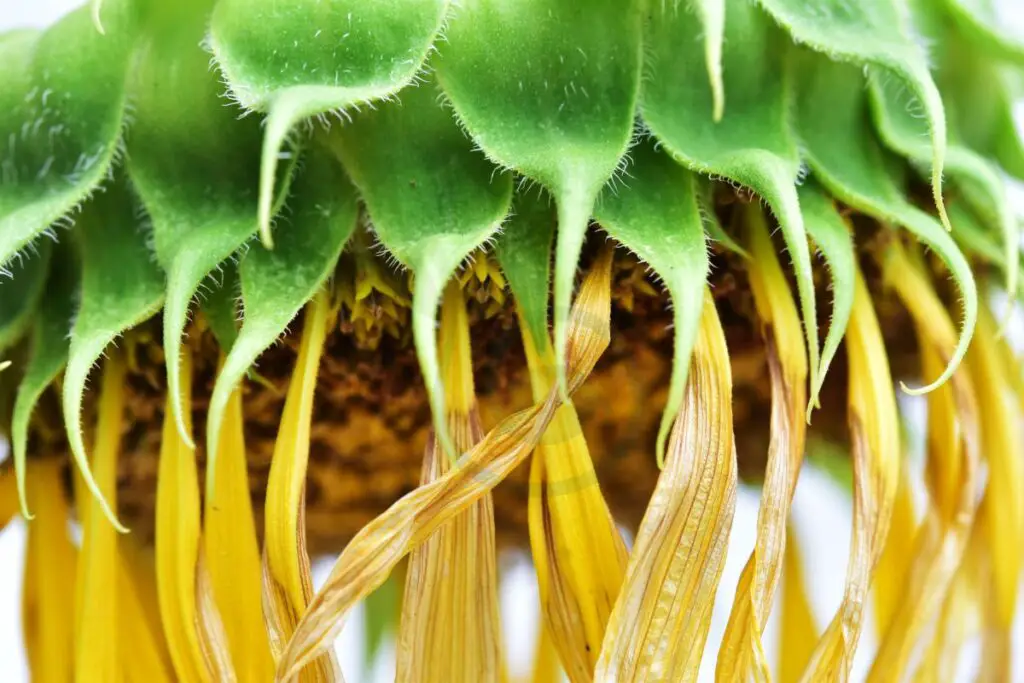
When selecting equipment, farmers need to consider specific field conditions and crop size. Assessing soil moisture levels and weather forecasts before initiating the harvest is essential. This helps in planning the timing of the harvest to ensure optimal conditions for seed extraction.
Evaluating factors such as slope, terrain, and accessibility aids in planning the harvesting process effectively. Ensuring favorable field conditions minimizes potential damage to both plants and equipment during harvest.
Harvesting Techniques
Manual Methods
Manual methods of harvesting sunflower seeds are typically used for small-scale production or in specialty markets. Skilled labor is required to carefully remove mature flower heads from the stalks, allowing for selective picking based on individual flower head maturity. This method offers precision and control over the harvesting process, ensuring that only fully developed sunflower heads are collected.
Hand harvesting is advantageous when farmers need to cater to specific market demands, such as organic or artisanal products that require meticulous attention to quality and detail. It also allows farmers to inspect each flower head individually, ensuring that damaged or immature heads are not included in the harvest. However, it is important to note that manual methods can be time-consuming and labor-intensive, making them less practical for large-scale commercial operations where efficiency is crucial.
Mechanical Harvesting
Mechanized harvesting involves using specialized equipment designed specifically for sunflower seed collection. Modern machinery streamlines the process by efficiently cutting and collecting sunflower heads, significantly increasing productivity while reducing overall labor requirements. The use of mechanical harvesters minimizes seed loss during the collection process and ensures timely gathering across extensive fields.
Mechanical harvesting has revolutionized large-scale agricultural practices by enabling faster and more efficient seed collection compared to manual methods. This technique is particularly beneficial for commercial farming operations where high volumes of sunflowers are cultivated for oil extraction or other industrial purposes. By utilizing mechanical harvesters, farmers can optimize their resources while meeting market demands with consistent product quality.
Processing Sunflower Seeds
Seed Cleaning
After the sunflowers are harvested, the farmers start by cleaning the seeds. They use various methods to remove debris, plant material, and other impurities from the seeds. This is crucial because clean seeds lead to better quality products and allow for easier storage. Efficient seed cleaning contributes to improved market value and product quality.
For example, one common method of seed cleaning involves using screens with different hole sizes to separate larger materials like stems and leaves from smaller seeds. Another method uses air currents to blow away lighter impurities while allowing the heavier sunflower seeds to fall into a collection bin.
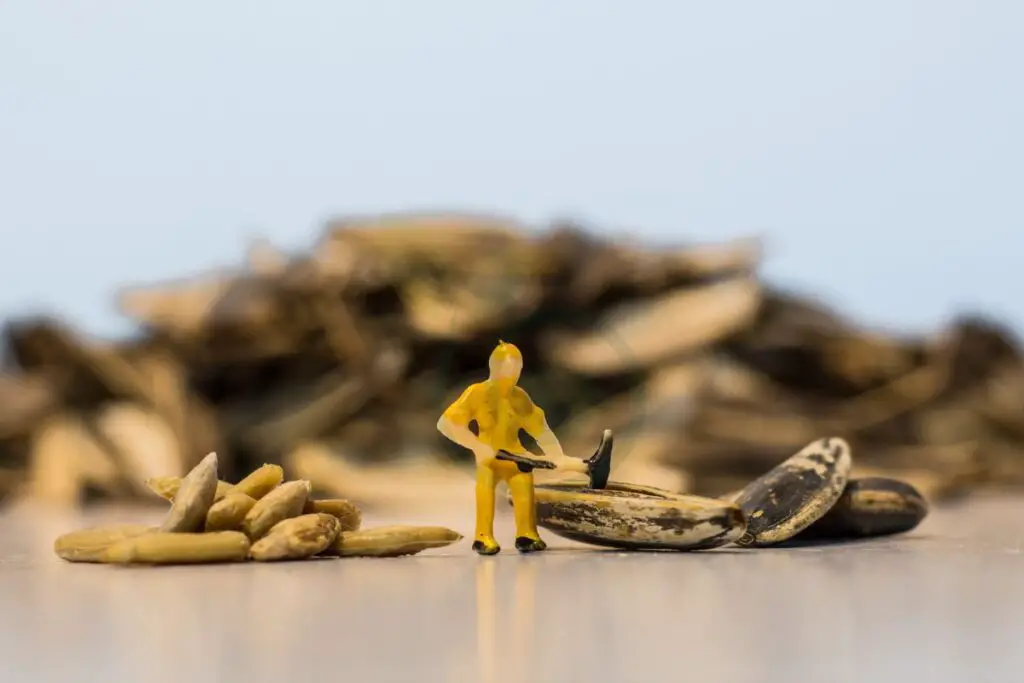
These processes ensure that only high-quality sunflower seeds move forward in the production chain, ultimately leading to better end products such as cooking oil or snacks made from these cleaned seeds.
Dehulling Process
Once the sunflower seeds have been cleaned, they undergo a dehulling process. Dehulling is essential for separating the edible kernel from the outer shell or hull of each seed. This step is critical for producing hulled sunflower seeds commonly used in snacks like trail mix or granola bars as well as in baking recipes.
To illustrate, imagine if you wanted to make a batch of homemade granola bars containing sunflower kernels without their shells - this requires dehulled sunflower seeds! By removing the tough outer layer through dehulling, farmers can cater to various consumer demands by diversifying their products beyond just whole-seed consumption.
Drying and Storage
Moisture Levels
Monitoring moisture levels during sunflower seed harvest is crucial. Properly dried seeds are essential for storage and further processing without compromising quality. Managing moisture levels ensures extended shelf life and reduces the risk of spoilage. For example, if sunflower seeds are harvested with high moisture content, they can develop mold, affecting their quality.
Maintaining an optimal level of dryness in sunflower seeds also prevents them from clumping together during storage or transportation, making it easier to handle them when needed for processing or sale. By keeping a close eye on moisture levels, farmers can ensure that their sunflower seeds remain in top condition until they're ready to be used.
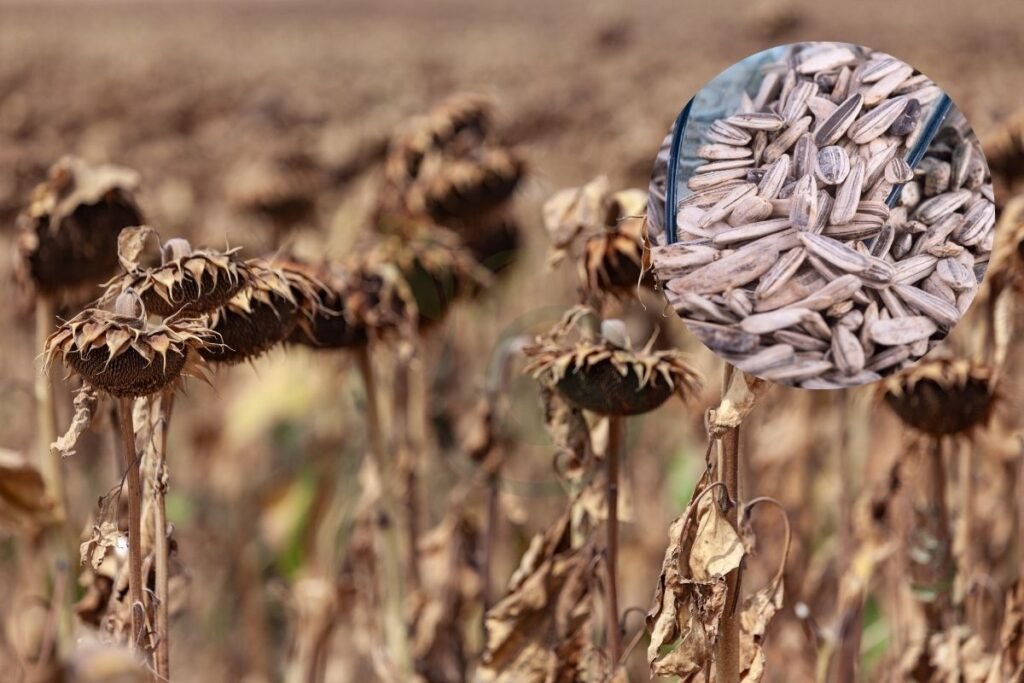
Storage Conditions
After harvest, maintaining appropriate storage conditions such as temperature and humidity is crucial for preserving seed quality. Implementing effective storage practices prolongs shelf life and sustains seed viability over time. For instance, storing sunflower seeds in areas with controlled temperature helps prevent rancidity caused by heat exposure.
Proper storage facilities protect sunflower seeds from pests, mold, and deterioration over time. This protection ensures that the quality of the harvested crop remains intact until it reaches its intended destination or undergoes further processing at a later stage.
Quality Control Measures
Seed Inspection
Inspecting harvested sunflower seeds is crucial to ensure their quality. Farmers carefully examine the seeds for any signs of damage, discoloration, or foreign materials. This thorough visual inspection allows them to identify any defects that may affect the seed's purity or marketability. By upholding industry standards for sunflower seeds through quality assurance measures during inspection, farmers can ensure that only high-quality seeds make it to the market.
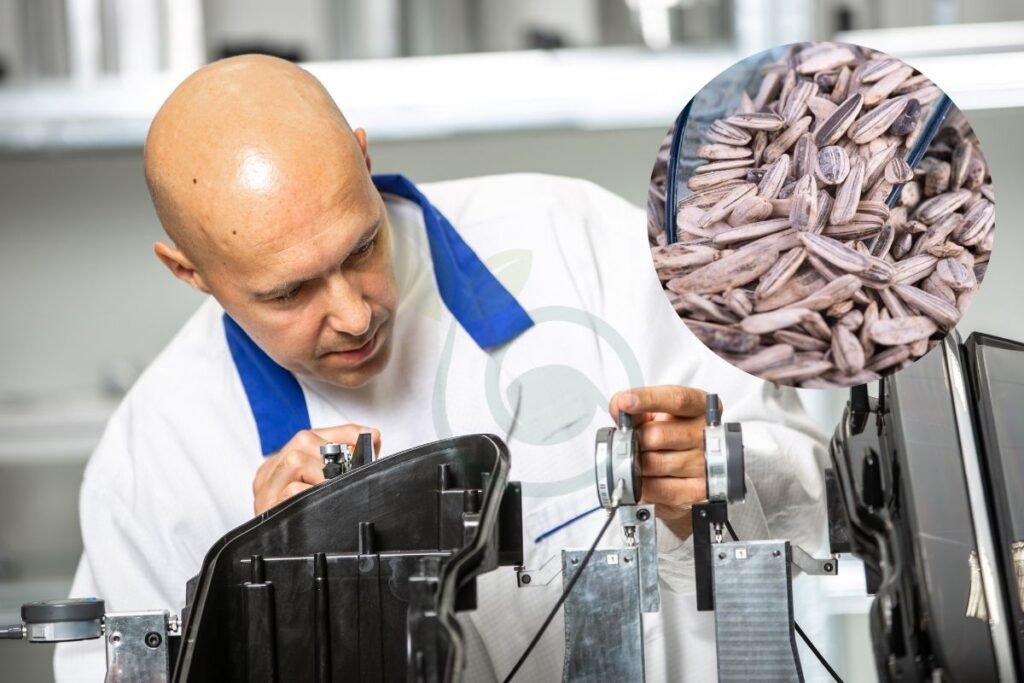
Quality control doesn't stop at just inspecting the seeds; it also involves maintaining their purity. To prevent cross-contamination with other crops during harvest and storage, farmers implement strict protocols. These protocols are essential in ensuring adherence to quality standards throughout the production process. By maintaining purity and preventing contamination, farmers safeguard the integrity of their product and uphold its value in the market.
In addition to visual inspections, advanced technology such as sorting machines can aid in identifying damaged or discolored seeds more accurately and efficiently than manual inspection alone.
Maintaining Purity
Maintaining seed purity is a critical aspect of quality control when harvesting sunflower seeds. Any cross-contamination with other crops could compromise the entire batch of harvested sunflower seeds. To avoid this risk, farmers employ meticulous procedures during both harvest and storage processes.
During harvest, special equipment designed specifically for sunflowers helps minimize contact with other crops on the field, reducing the chances of cross-contamination significantly. Moreover, dedicated storage facilities equipped with proper ventilation systems help maintain ideal conditions for storing sunflower seeds without risking exposure to contaminants from other crops or environmental factors.
Sunflower Seeds for Consumption
Processing sunflower seeds for consumption involves several key steps to ensure that the end product meets food safety regulations and consumer preferences. The process typically includes roasting, seasoning, and packaging the seeds for sale to consumers.
During processing, it's crucial to maintain high standards of hygiene and cleanliness to prevent contamination. This helps in delivering safe products to consumers who expect top-quality seeds. For example, ensuring that the equipment used in processing is thoroughly cleaned between batches can significantly reduce the risk of cross-contamination.
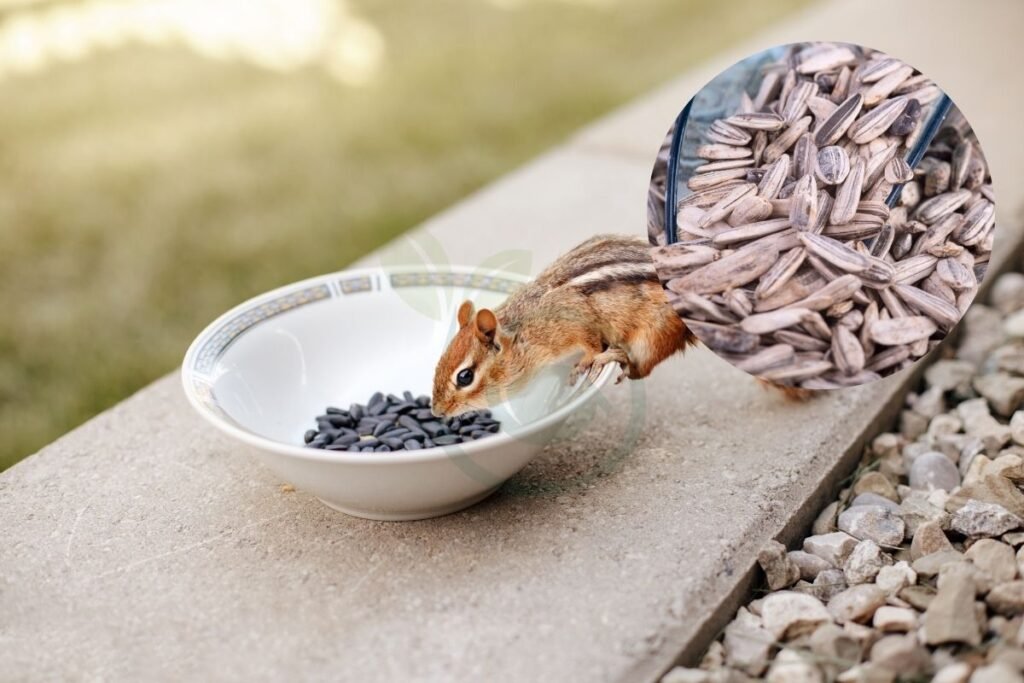
Value addition through edible seed processing caters to diverse culinary preferences by offering a variety of flavored sunflower seeds such as salted, barbecue-flavored, or even spicy options. These variations cater to different taste preferences and expand the market for sunflower seeds, making them more appealing to a wider audience.
Sunflower Seeds for Animal Feed
Feed Grade Seeds
Feed grade sunflower seeds are essential in providing the necessary nutrients for livestock. These seeds must adhere to specific guidelines to ensure they meet the nutritional requirements for animal feed formulations. Proper handling during processing is crucial in maintaining the nutrient integrity of these seeds, which directly impacts the quality of animal feed.
High-quality feed grade sunflower seeds play a vital role in supporting livestock nutrition across various agricultural operations. For example, when farmers harvest and process sunflower seeds according to established standards, it results in a product that serves as an excellent source of protein and energy for animals. This ensures that livestock receive adequate nourishment, contributing to their overall health and well-being.
Additional Uses of Sunflower Seeds
Oil Production
Sunflower seeds are not only valuable for animal feed but also essential for oil production. The seeds undergo extraction processes like pressing or solvent extraction to obtain their oil. This extracted oil can then be refined into various grades suitable for both culinary and industrial applications. For example, the high oleic acid content in some sunflower seed oils makes them ideal for deep frying due to their stability at high temperatures.
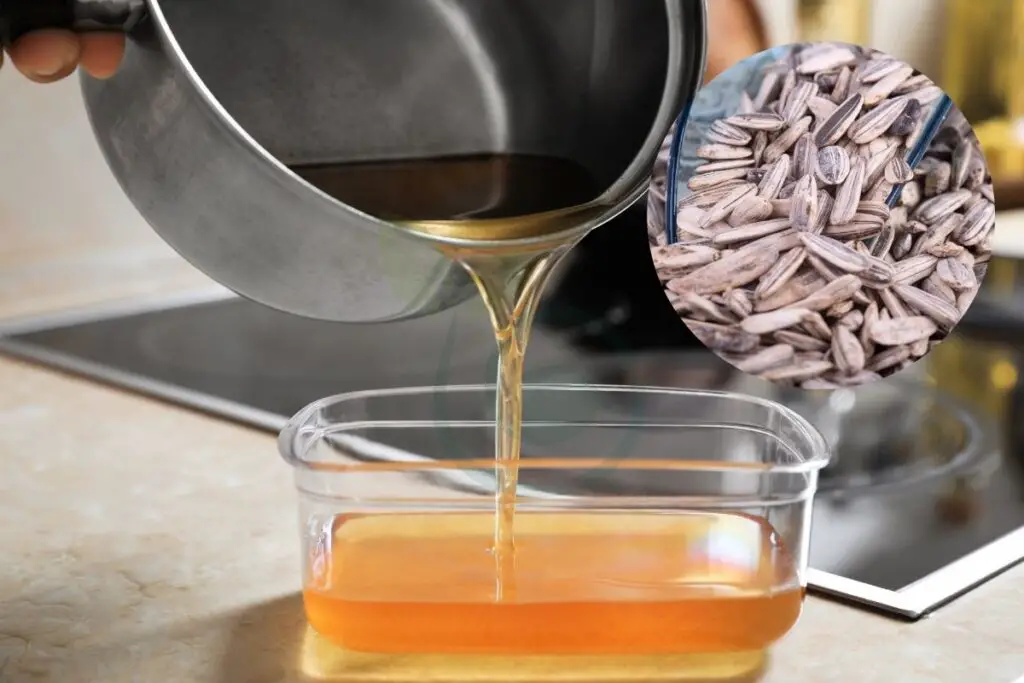
The versatility of sunflower seed oil contributes to a wide range of consumer products and industrial uses. It is used in cooking oils, salad dressings, margarine, and even as a biodiesel fuel source. The by-products from the oil extraction process are also utilized; the leftover meal after pressing contains protein and fiber, making it an attractive ingredient in livestock feed.
Sunflowers as Cut Flowers
In addition to being cultivated for their seeds, sunflowers are often grown specifically as cut flowers for commercial floral arrangements. Their large blooms and vibrant colors make them popular choices in floral design, adding a cheerful touch to bouquets and centerpieces. Cultivating sunflowers as cut flowers offers additional revenue streams beyond traditional seed production.
The ornamental value of these flowers provides opportunities for farmers to diversify their income sources while enhancing the aesthetic appeal of various settings such as weddings, events, or home decor. Furthermore, growing sunflowers solely for their visual appeal reduces waste by utilizing plants that may not meet the specific criteria required for optimal seed production.
Final Remarks
Congratulations! You've now gained a comprehensive understanding of how farmers harvest sunflower seeds, from preparation and harvesting techniques to processing, storage, and various uses. You're equipped with the knowledge to appreciate the intricate process behind bringing sunflower seeds from the field to various end products. As you munch on your favorite sunflower seed snack or use sunflower seeds in cooking, remember the dedication and hard work that goes into each tiny seed.
Now that you've delved into the world of sunflower seed harvesting, consider visiting a local farm during the harvest season to witness the process firsthand. By supporting local farmers and learning more about agricultural practices, you can deepen your connection to the food you consume and gain a newfound appreciation for the journey from farm to table.
Frequently Asked Questions
How do farmers prepare for sunflower harvest?
Before the harvest, farmers monitor the maturity of sunflowers and prepare their equipment. They ensure that harvesting machinery is in good condition and make logistical arrangements for efficient harvesting.
What techniques are used for harvesting sunflower seeds?
Farmers use specialized equipment like combine harvesters to efficiently cut and collect mature sunflower heads. The harvested heads are then processed to extract the seeds using various methods such as threshing and winnowing.
How are sunflower seeds processed after harvesting?
After being harvested, the sunflower heads go through a series of processes to extract the seeds. These processes involve removing debris, hulls, and other impurities from the seeds before they are ready for consumption or further industrial use.
What measures are taken for quality control during sunflower seed processing?
Quality control measures include sorting out damaged or immature seeds, ensuring proper cleaning procedures, maintaining optimal storage conditions, and conducting regular checks to meet industry standards.
What are some additional uses of sunflower seeds apart from consumption and animal feed?
Apart from human consumption and animal feed, sunflower seeds have diverse applications such as producing oil for cooking or industrial purposes, making birdseed mixes, extracting biofuels due to their high oil content, and even serving as ingredients in various food products.
Image Source: Paid image from CANVA

